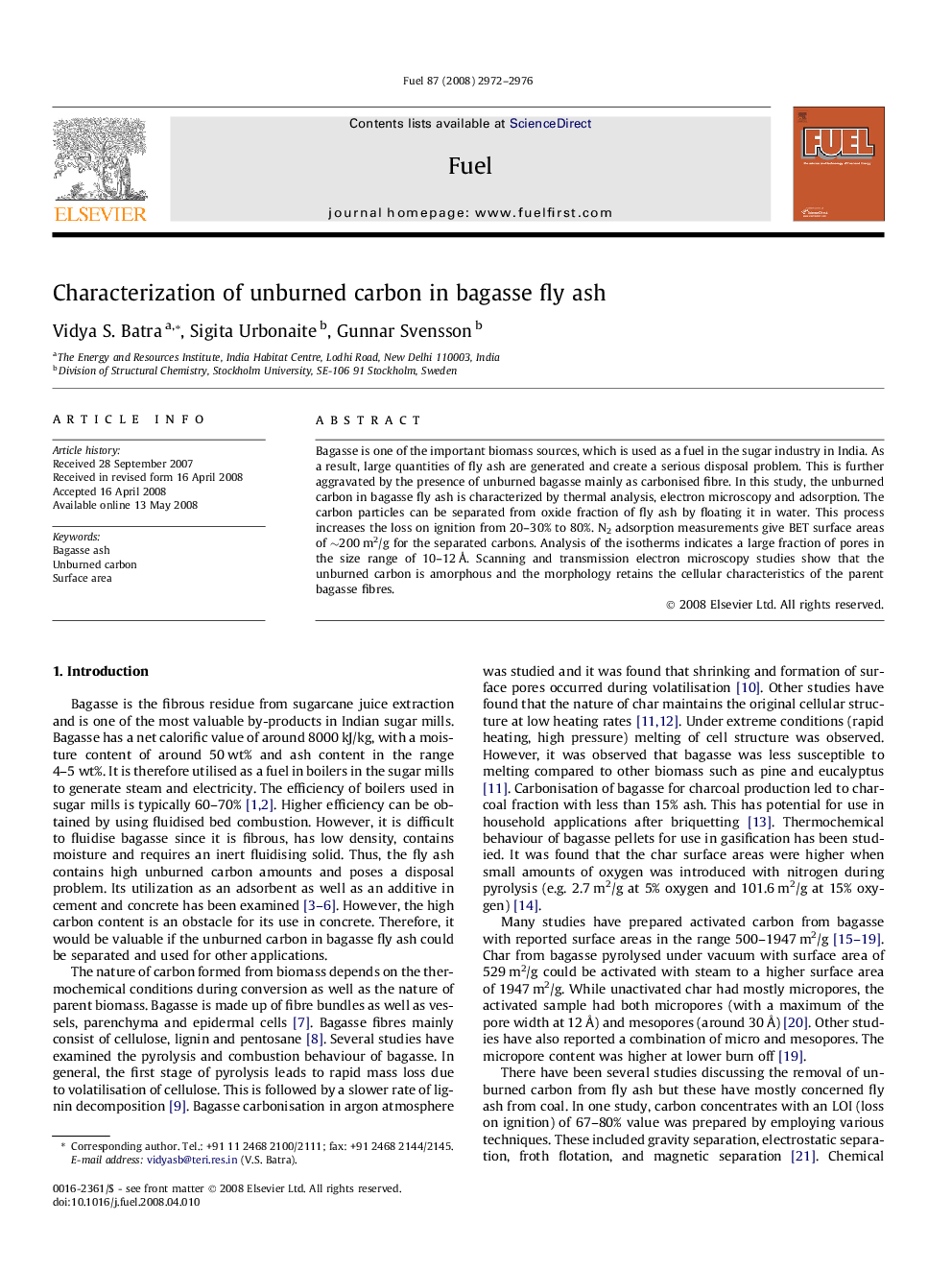| Article ID | Journal | Published Year | Pages | File Type |
|---|---|---|---|---|
| 207530 | Fuel | 2008 | 5 Pages |
Bagasse is one of the important biomass sources, which is used as a fuel in the sugar industry in India. As a result, large quantities of fly ash are generated and create a serious disposal problem. This is further aggravated by the presence of unburned bagasse mainly as carbonised fibre. In this study, the unburned carbon in bagasse fly ash is characterized by thermal analysis, electron microscopy and adsorption. The carbon particles can be separated from oxide fraction of fly ash by floating it in water. This process increases the loss on ignition from 20–30% to 80%. N2 adsorption measurements give BET surface areas of ∼200 m2/g for the separated carbons. Analysis of the isotherms indicates a large fraction of pores in the size range of 10–12 Å. Scanning and transmission electron microscopy studies show that the unburned carbon is amorphous and the morphology retains the cellular characteristics of the parent bagasse fibres.
